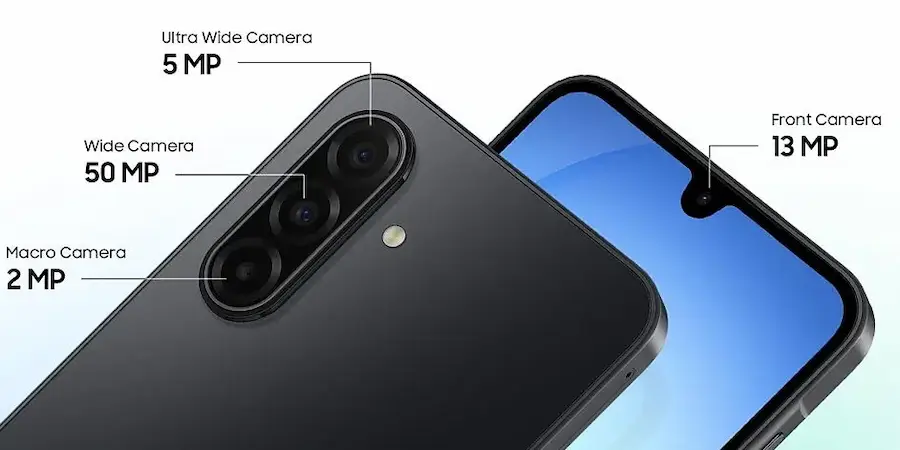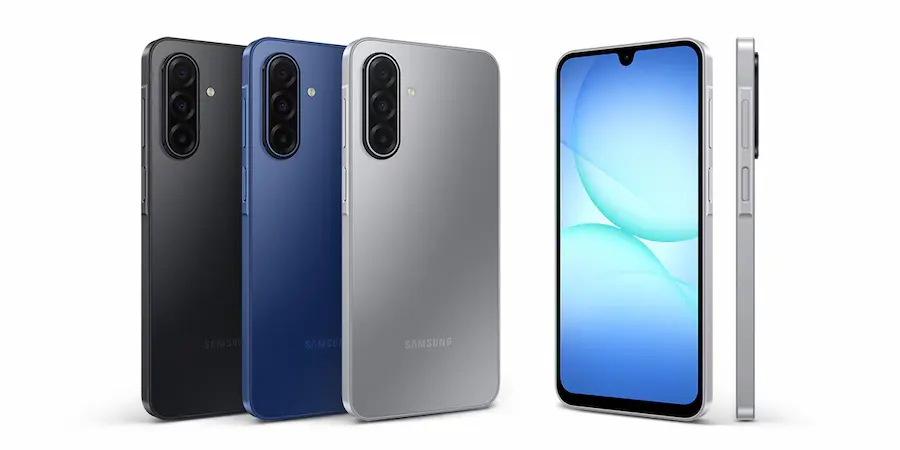The Samsung Galaxy A16 earned a reputation as a “jack-of-all-trades” phone for its balance of price and features, and now its successor, the Galaxy A17, arrives making a statement where it matters most: the display. While the iPhone 16 remains stuck at 60 Hz, this entry-level range jumps up to 120 Hz, something unthinkable not long ago at this price point. Does it make sense to upgrade if you already have the A16 or is it better to wait? We analyze it with a magnifying glass so you get it right the first time.
Design and display: 120 Hz for everyone
Samsung changes the script in the aesthetic department: from the S-series style with “floating” lenses on the A16 we move in the A17 to an elongated pill-shaped module, closer to what we’ve seen on recent Xperia phones. On the front, however, everything sounds familiar: generous bezels, a pronounced chin and a teardrop notch for the selfie camera.
In hand, the differences are minimal. The Galaxy A17 measures 7.5 mm thick and weighs 192 g, compared to the A16’s 7.9 mm and 200 g; it’s a hair thinner, but the feel is practically identical. In materials, both use a plastic frame and Gorilla Glass Victus protection on the screen, although the A16 opts for a plastic back and the A17 for a fiberglass back. In colors, the new generation arrives in Black, Gray and Blue, while the A16 offered Black, Gray and a light Green.
The biggest evolution is in the panel: we still have a 6.7-inch Super AMOLED with FHD+ resolution (1080 x 2340), but the Galaxy A17 raises the refresh rate to 120 Hz, leaving behind the A16’s 90 Hz. Both claim 800 nits in high brightness mode (HBM), and in previous tests the A16 reached 733 nits at 100% APL with a minimum of 1.6 nits, figures that serve as a reference while the A17 measurements arrive. In fact, the smoothness when scrolling or playing is as noticeable as when you enable G-Sync/FreeSync on a gaming monitor: once you get used to it, there’s no going back.
Performance and software: same chipset, longer lifespan
If you were expecting a power leap, it’s time to temper expectations. The heart of the Galaxy A17 is the same Exynos 1330 (5 nm) as the A16; in specific markets the latter has also been seen with the MediaTek Dimensity 6300, but the overall picture doesn’t change: we’re talking about a modest chip. In performance tests, the Exynos 1330 hovers below 1000 points in single-core and around 1900 in multi-core on Geekbench 6, with about 360 units in 3DMark, so no substantial differences between generations are expected.
In memory, total continuity: versions from 4/128 GB and scaling in 2 GB steps up to 8/256 GB, enough to place it at the higher end of the budget segment. The fingerprint reader remains on the side, of the capacitive type, a reliable and fast classic for unlocking without frills.
Where there is a strong argument is in support. The Galaxy A17 ships with Android 15 and boasts up to six years of major updates, the same as the A16 —which started on Android 14— although by simple calendar effect the new model will live one year longer. For a phone at this price, keeping the software fresh for so long is almost as differentiating as the jump to 120 Hz, something that the geekiest users value as much as a good ProMotion in Apple’s ecosystem.
Cameras, battery life and price: is it worth it?
The rear configuration remains: 50 MP for the main sensor, 5 MP for the ultra wide and 2 MP for the macro, with 13 MP for the selfie. The key novelty of the A17 is that the main sensor adds optical image stabilization (OIS), a valuable support for low-light photos and steadier videos. The A16 already performed above expectations for its range, reaching 124 out of 158 in a composite benchmark, with 71/85 for the main camera and 25/30 for the front; if Samsung has refined processing on the A17, the sum with OIS should be noticeable, but this will need to be confirmed with side-by-side samples.

In battery, no surprises: 5,000 mAh in both and 25 W wired charging via USB-C, with no sign of wireless charging. In composite tests, the A16 registered 6 h and 12 min per cycle, a correct but not leading result, probably penalized by the chipset’s efficiency. The A16’s full charge took 1 h and 43 min; if the A17 repeats those figures, it will remain far from rivals that boast filling the tank in half an hour, although here the priority seems to be long-term battery health rather than raw watts.
And the price? The Samsung Galaxy A17 is on sale for 239 euros, with details for the United States still to be confirmed, which positions it as a very appealing option if you want an affordable phone or a reliable second device. If you already have an A16, the jump is not essential: apart from the 120 Hz screen and OIS, the rest is practically déjà vu. But if you’re coming from something older —or you’re getting your first Android—, the combination of a smooth panel, a main camera with stabilization and six years of support makes the A17 a rounded candidate in the entry-level segment.
.

